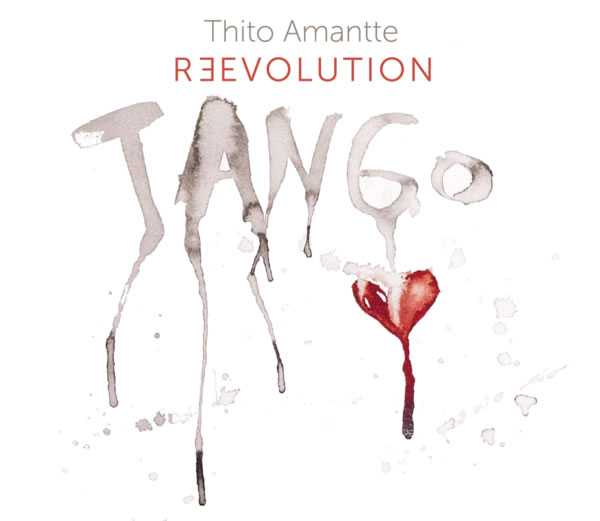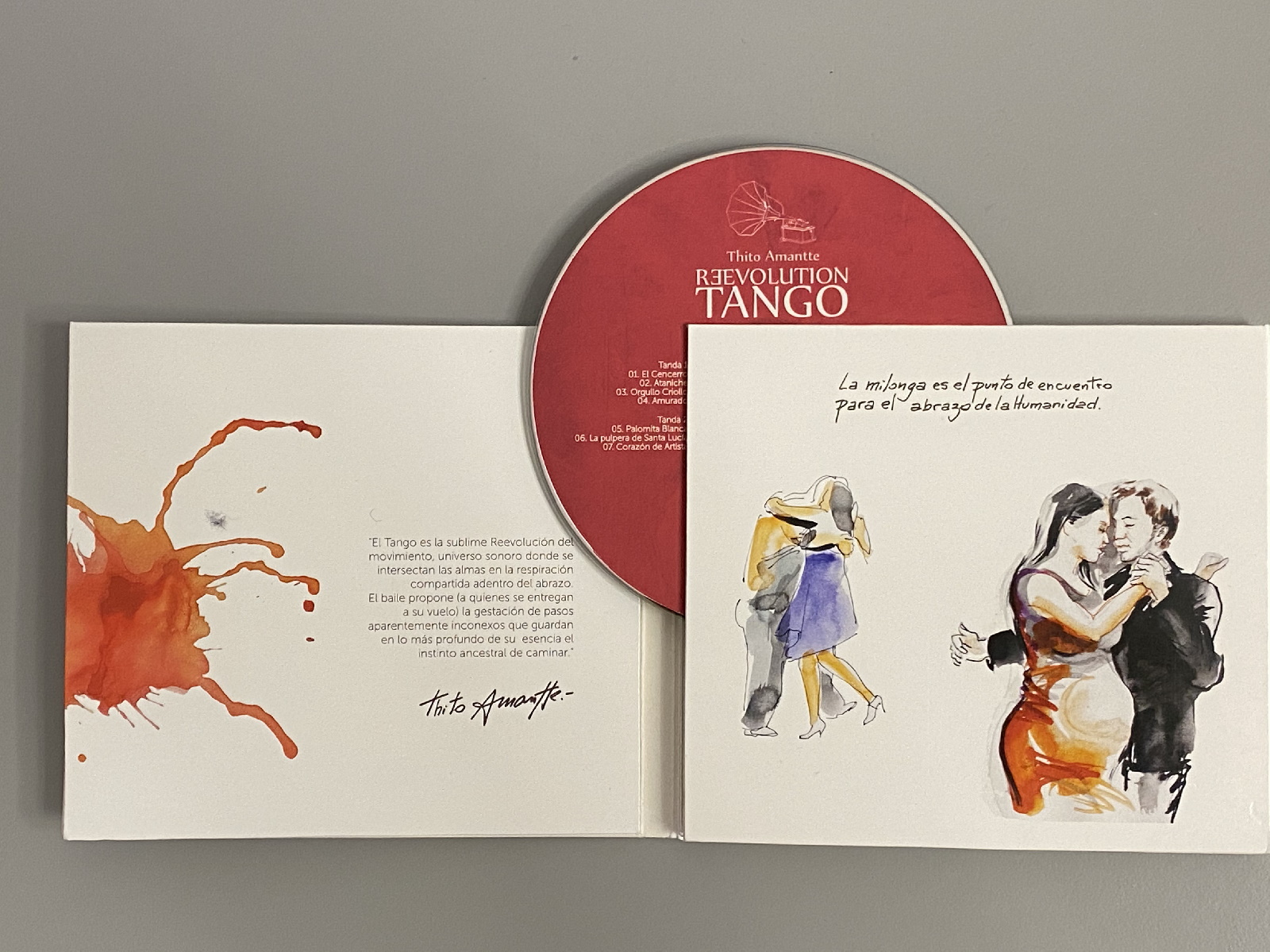It's hard to imagine tango without the bandoneón. And yet we don't just have to imagine it, we can see what happens when it's replaced by the venerable accordion. It's key to the sound of Thito Amantte and his band. Here, I review their first album release, Reevolution. And yes, click the link and listen there for free!

I bought their CD from them when they performed in Prague this November (I purchase all music that I review as a matter of policy). They were so popular with the dancers that they were invited to three or four milongas in a row before they departed to the next city on their tour.
Indeed, they are a band that plays primarily for the dancers. They've got the beat, the flow, the character that prompts you off your chair and onto the dance floor.
I mean, would you sit this one out?
The accordion is the star of their arrangements, and yet the other musicians don't just provide the background. You'll hear the cello rising to the occasion and complementing the melody just as capably. In Palomita blanca, violin joins in occassionally with virtuoso riffs.
For this review, I listened to the canonical versions of the tunes present. Thito Amantte is in a good company here: D'Arienzo, Láurenz, Canaro among others. The band is respectful to your expectations - as in, what you would expect the song to sound like - and innovating mostly by their instrumentation.
In the rhythmical tunes, the accordion makes them sound folksy, as if played in a smoky pub, without sacrificing any technical quality - all notes land where they should, and there is plenty of them!
In El cencerro as in Ataniche, for instance, the on-beat accents are always there, providing plenty of assistance even to the musically-challenged leader. And yet the arrangement is anything but simple, with Amantte somehow managing to sneak in plenty notes, plenty music :)
In Inspiración, the accordion becomes a majestic lyrical force, rendering Peregrino Paulos's classic with moving enthusiasm.
I was curious how will Amantte come out vis-a-vis Pedro Láurenz, whose bandoneón is so unforgettable in Orgullo criollo and Amurado. While Láurenz sounds hurried, agitated, almost unable to contain his genius, Amantte here is more grounded. That's good, because you don't want to compete by imitation! I felt that his rendering was technically masterful and, because of the rhythmical grounding, perhaps even more suitable for the average dance-floor. Let's be honest here, Láurenz can be challenging to the dancers.
The valses are swift and delightful. The staples Palomita blanca and Corazón de artista are complemented by La pulpera de Santa Lucía., which, according to the Tango-DJ Database, has just one Golden Age rendition, that by Castillo / Alessio. I'm always thrilled when contemporary bands make a cover of a great tune that is not yet played to the death.
It's a similar story with the milongas on this album. The over-played Silueta porteña comes in a respectable arrangement, but hey, it's really hard to stand out on this particular field. La milonga de Buenos Aires brings a little more flair, but what really tops the others is the wonderful El barrio del tambor. Thito Amantte brings out his voice and is joined by another singer, Juan Pablo Cartabia. Towards the end of the track, three tambourines cook the dance-floor tender to the point of melting. Lovely!!
This album has no weaknesses - Thito Amantte has showcased the best of what his band offers. I would take his valses and milongas into dedicated tandas without hesitation. The tangos would take a little more work as we have a here a mix of varying stiles - from the straightforward beat of Ataniche to the more lyrical Ensueños and Una emoción. A challenge that a DJ will appreciate.
On a technical note, the DJ has to take care of a few songs that have a special ending. After the tune completes, the band continues with an unrelated melody that sounds like a cortina, with ambient sound of a half-filled bar. One would have to cut that out for milonga use.
Overall, this album brings a fresh look at the standard tango repertoire, focusing primarily on the needs of the dancers and being original in the right way - mindful of the tradition and also by the fact that we can't and shouldn't want to re-create the memories of 1940s eighty years later without any regard to the present. Bravo!
PS
Almost forgot: the graphical production of the CD is phenomenal! There's an insert with summary information about each track, accompanied by colorful illustrations by Veronika Wunschova. I have not seen a tango CD produced this well in a long time.

